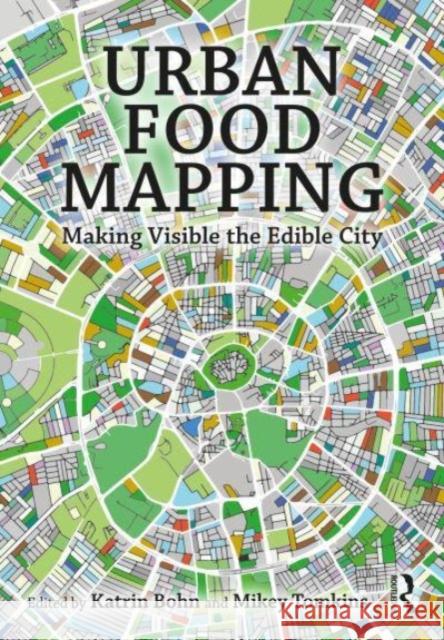Urban Food Mapping » książka



Urban Food Mapping
ISBN-13: 9781032402802 / Twarda / 2024 / 334 str.
Urban Food Mapping
ISBN-13: 9781032402802 / Twarda / 2024 / 334 str.
(netto: 673,60 VAT: 5%)
Najniższa cena z 30 dni: 690,82
ok. 22 dni roboczych
Dostawa w 2026 r.
Darmowa dostawa!
Carolyn Steel, architect, urbanist, author of Hungry City: How Food Shapes Our Lives (2008) and Sitopia: How Food Can Save the World (2020), Great Britain
Dr. Joe Nasr, architect and urbanist, urban agriculture pioneer, lecturer at Toronto Metropolitan University, Canada
'No matter from which perspective you look: if you are interested to move towards a productive urban food future, this book is a must-have! In a refreshing way, essays outline the breadth of questions and approaches to action, focusing on the role of different mapping methods as knowledge generators and communication tools. By carefully and astutely framing the approaches, the book discloses the revelatory power of mapping methods and outlines the need for urban food mapping as an urban practice and a future interdisciplinary field of research.'
Undine Giseke, landscape architect, partner in bgmr Landschaftsarchitekten, professor emeritus at Technische Universität Berlin, Germany
Part 1: FOOD GROWING SITES: Reimagining land use Edible London: A greater London Agriculture Agroecologics: Reimagining an agri-urban design for Luxembourg Re-negotiating the boundaries between infrastructure and landscape: Mapping infrastructural ecologies Mapping urban agriculture potentials in Nerima City, Tokyo Mapping multifunctional agro-urban landscape to manage the edible city in North-Eastern Italy Part 2: FOOD SYSTEM ACTIVITIES: Recording economies, patterns and crises Using visual methods to map green infrastructure for a sustainable food economy in Letchworth Garden City A participatory digital mapping practice: Proposing Integrated Development Areas for food secure systems in cities Walking out for dinner: Discovering and mapping food choices in Saigon Follow the food… and the spaces it shapes Rupturing the mundane in times of crisis: New geographies of food in Hannover, Germany Part 3: FOOD STAKEHOLDERS: Proposing change for communities Lambeth plots: Two mapping projects highlighting existing and potential city spaces for food growing The practice of sharing: Mapping food networks in Delft, South Africa Six feet high and rising: Mapping the Edible City as a theatre of food Mapping seeds of freedom with Red de Huerteros Medellín Food in urban design and planning: The CPUL Opportunity Mapping Method Part 4: FOOD PRODUCE AND CULTURES: Uncovering the special in the everyday Oota Kathegalu: Tracing the food stories of Bengaluru, India Emblematic fruit: Mapping aguaje palm fruit vendors during Covid-19 in Iquitos, Peru Reimagining the (agri)cultural city: Commoning and cultivating relationships in Utrecht, Holland Participative food culture mapping in polarized urban districts A fairy tale of a place: Depictions of 21st century London as a fantasy foodscape in contemporary food writing Part 5: FOOD NETWORKS AND RESOURCES: Connecting people and places Food Atlas Vienna: A collective cartography of the urban food landscape Mapping Malus in Massachusetts: Creating a system for apple foraging The historic foodscapes of Lisbon: Mapping for a sustainable future A food security geonarrative: Mapping in/formal foodscapes in Bangalore, India Chicago’s urban food networks: Mapping the future of a thriving metropolitan foodshed
Katrin Bohn is an architect and urban practitioner and a principal lecturer at the University of Brighton, UK. Together with André Viljoen, she forms Bohn&Viljoen Architects, developing their food-focused urban design concept Continuous Productive Urban Landscapes (CPUL) in theory and practice.
Mikey Tomkins is an independent researcher, artist and honorary research fellow at the University of Brighton, UK. He runs Edible Urban, a company that conducts the Edible Mapping Project, a participatory mapping project engaging communities in revisioning urban space for food production.
1997-2025 DolnySlask.com Agencja Internetowa
KrainaKsiazek.PL - Księgarnia Internetowa









